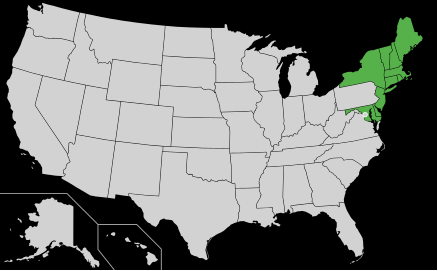Cuomo: State Will Extend Fracking Review
November 28, 2012The Top Fracking Threats to Health NY Must Assess
December 3, 2012By Robert Howarth, NEW YORK DAILY NEWS, Nov. 29, 2012
*Read about the Damascus methane baseline in the Delaware River Basin (not drilled)
*Read about methane emissions in the Susquehanna River Basin (drilled)
In recent weeks, Gov. Cuomo has written eloquently in these pages about the need, in the wake of superstorm Sandy, to respond to the danger of climate change. And one of the ways to answer the challenge of a warming planet, some say, is to embrace hydrofracking — the process of drilling deep underground for natural gas.
Natural gas burns cleaner than other forms of fuel, the logic goes, releasing less atmosphere-warming CO2. So it’s portrayed as a win-win: cheaper, plentiful energy that happens to hurt the planet less than other fossil fuels.
The fracking cheerleaders are misinformed. Drilling for natural gas has some disastrous environmental consequences. It will speed climate change, not help stave it off.
The methane that is inevitably emitted from natural gas wells and pipelines is more than 100 times more powerful than CO2 as a greenhouse gas during the first two decades after emission.
Not only are the supposed global warming benefits of hydrofracking nonexistent, but those whose chief environmental concern is climate change must acknowledge that the technology is about as harmful as they come.
Elected leaders who recognize the threat of climate change need to do more than simply build the infrastructure to protect against rising tides. They need to also ensure that we reverse it, rather than exacerbating the problem.
That means moving away from fossil fuels and toward clean-burning and renewable fuels.
Without changes in our consumption of fossil fuels — natural gas among them — the Earth’s temperature will rise 1.5 to 2 degrees Celsius above its baseline in the next 18 to 35 years.
To put that in perspective, we are currently at a little less than one degree above the baseline, and we are already seeing droughts, floods, superstorms and other extreme weather.
In its most recent report, the International Energy Agency — the highly respected autonomous intergovernmental research and advisory group composed of the United States and 27 other nations — explains that just using one-third of the planet’s proven fossil fuel reserves over the next 35 years will lead to a 2-degree rise in temperatures, which increases the danger that we will pass a tipping point.
Meaning: We are making it more likely that temperatures will rise such that we forever lose the ability to reverse the trend.
All this means we should focus on reducing the use of fossil fuels — not finding more of them.
While reducing CO2 emissions from coal plants, cars, trucks, factories and homes is important, we cannot ignore the dangers from methane — and the natural gas industry is the single largest source of methane pollution in the U.S.
According to the World Meteorological Organization, the United Nations Environment Programme and scientists at the NASA Goddard Space Institute in New York City, the climate system responds more slowly to CO2 than methane, and reducing CO2 (while critical for the long term) will barely help over the next 18 to 35 years.
On the other hand, reducing emissions of methane and similar substances would cut the rate of global warming by almost half over the coming 35 years.
Cuomo has supported development of renewable sources of energy like solar and wind power. We need to be focused ever more intently on improving these industries and technologies, rather than betting on an industry that will exacerbate the climate change that is putting our cities in danger.
Howarth is the David R. Atkinson Professor of Ecology & Evolutionary Biology at Cornell University.



